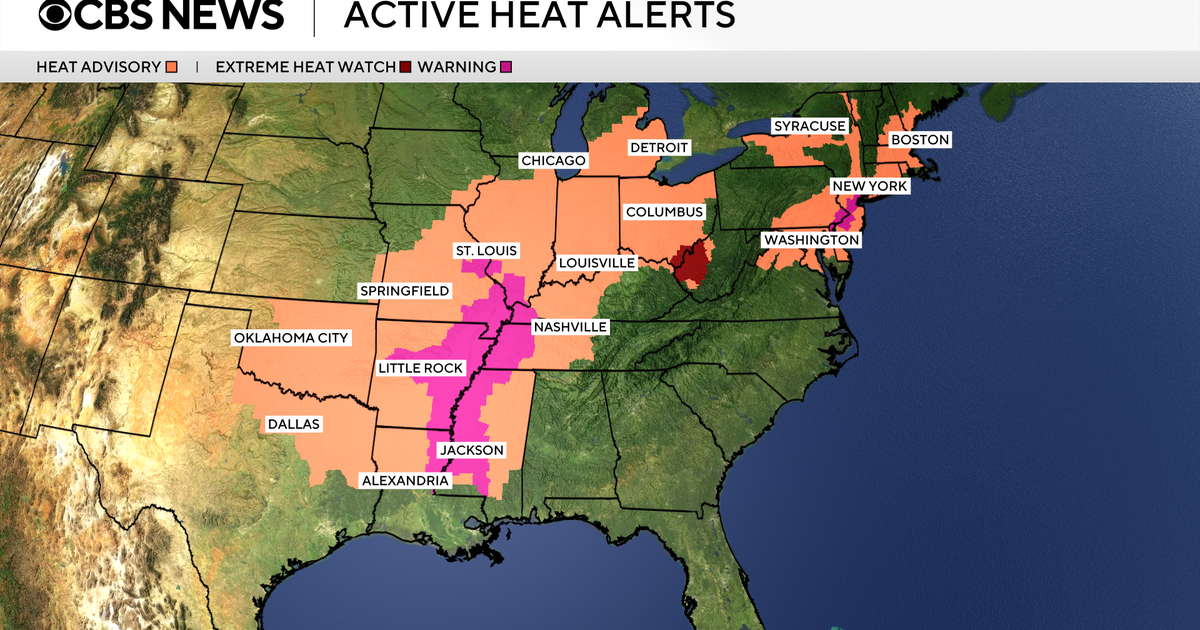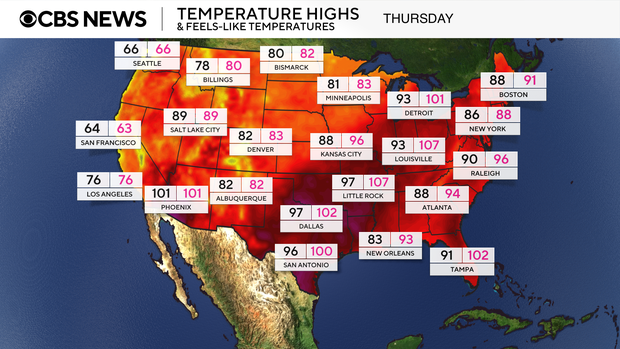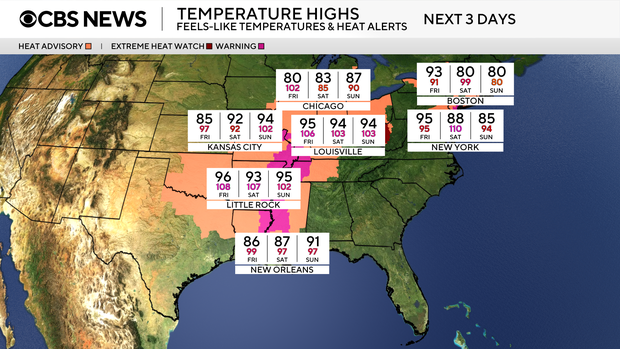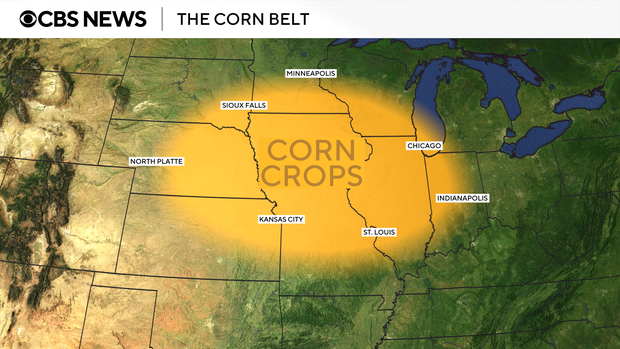The extreme heat that has baked much of the central United States this week is slowly shifting east ahead of the weekend, forecasters said.
More than 130 million Americans across at least 20 states are under heat alerts on Thursday. Parts of the Midwest, including the Corn Belt, have felt the high temperatures for multiple days.
CBS News
Temperatures on Thursday are forecast to be 10 to 15 degrees above average for this time of year with feels-like temperatures over 100 degrees expected in multiple areas.
CBS News
Some parts of the Mississippi Valley will continue to see high temperatures over 90 degrees for a few more days, even as the heat dome moves over parts of the Northeast.
CBS News
What is a heat dome?
A heat dome happens when hot air is trapped over an area due to a persistent high pressure system, William Gallus, a professor of atmospheric science at Iowa State University, said.
Heat domes can last for days to weeks and can stretch over multiple states.
Corn sweat adds to the humidity
With extreme heat in the Corn Belt, a region including parts of the Plains and Central Mississippi Valley, a phenomenon known as corn sweat has made the humidity worse, experts said.
“There are pores on the bottom side of the leaves,” Iowa state climatologist Justin Glisan told CBS News national correspondent Lana Zak. “And that’s where oxygen is released, but also water vapor.”
The process can add up to 10 degrees to the feels-like temperature, Glisan said, because just 1 acre of corn can release as much as 4,000 gallons of water into the air per day. Iowa has around 13 million acres of corn.
Nikki Nolan/CBS News






